Unless you live in a time warp and have not bought a single electronic device in the last decade, you know that we are constantly having to maintain the charge on one device or another. Items such as phones, tablets, power chargers, Bluetooth equipment, etcetera, usually charge on a USB (universal serial bus) that operates at 5-volt dc. The search for the proper charge cable and the power supply block or cube-style charge adapter that you plug into the ac voltage source seems never-ending.
There is good news for users, as various manufacturers have recognized that they can make our life simpler by providing receptacles that already have the power supply block or cube device built into the device. In other words, a hybrid receptacle that we can utilize for both 120-volt ac charging and 5-volt dc charging. Some have even gone as far as omitting the 120-volt ac and including only multiple ports at 5-volt dc. The overall concept is that these new ac/dc or dc only receptacles can be installed into standard receptacle boxes and provide the convenience of being able to provide the power you need for the device you wish to charge, either a 120-volt ac or a 5-volt dc device.
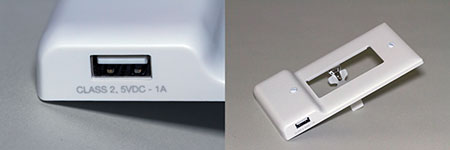
Years ago, the first versions of these that I saw plugged into the face of a standard receptacle and essentially created a receptacle extension adapter. Other versions were modified face plates that had the USB charging ports as part of the faceplate, but also required physical connections to the conductor termination points on the existing receptacle. Various versions of these have existed for some time. The major questions I had with these were related to quality and product listing. I would ask if the device was evaluated to a standard and did it meet the durability that we are used to for our electrical devices. The answers generally did not impress me, and the response was often along the lines of “We have a patent pending…” That was an indication to me that the items I considered critical (such as listing and labeling) hadn’t even been started.
However, the concept was good and served a need, so it was not too long before major manufacturers of electrical devices saw the opportunity and embraced it. Today we can find several versions of the USB Charger Receptacle made by multiple manufacturers and in a variety of configurations.
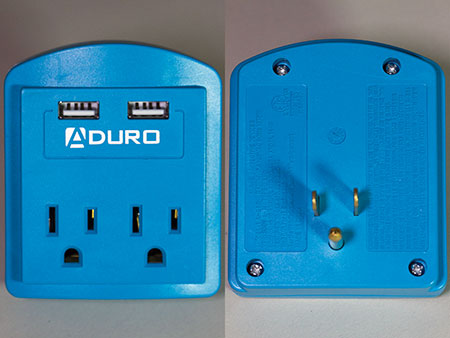
One issue an inspector should watch for is using one of these devices with only USB ports to replace a standard 120-volt ac receptacle. This may create a code violation of the receptacle wall spacing requirements in the Code. Also, check to make sure the products have a listing mark from a qualified electrical testing laboratory. Applicable UL standards include UL 498 and UL 1310.
The 2017 NEC has new language in 406.3(F) and 406.6(D) for receptacles with USB chargers. Section 406.3(F) is titled “Receptacle with USB Charger” and states that “A 125-volt 15- or 20-ampere receptacle that additionally provides Class 2 power shall be listed and constructed such that the Class 2 circuitry is integral with the receptacle.” Section 406.6(D) is titled “Receptacle Faceplate (Cover Plates) with Integral Night Light and/or USB Charger” and states that “A flush device cover plate that additionally provides a night light and/or Class 2 output connector(s) shall be listed and constructed such that the night light and/or Class 2 circuitry is integral with the flush device cover plate.”
Are all these USB charger receptacles created equal? Unsurprisingly, the answer is no. As mentioned, they come in various configurations from a number of different manufacturers, each of whom offers its own level of quality and available configurations. Additionally, they can have different power levels for charging. The first versions were often approximately one-ampere chargers, but the charging level was soon upgraded to approximately two or three amperes, and now they are available up to four amps. What does this mean to the devices we are charging? Each device we use has a recommended charging device with a specified amperage and voltage. For instance, if your tablet device recommends 2.1 amps for charging and will charge in 4 hours using this unit, how long will it take if you use a one-amp charger? Because it is less than one-half of the recommended level it will still charge, but it will take more than twice as long, so upwards of 8 hours. Additionally, some devices do not recommend using chargers with lower amperage ratings.
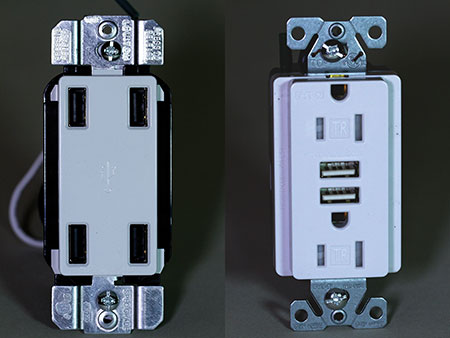
So how do these combination receptacle devices affect the charging of your devices? From the information I have been able to gather, if you only connect one device then the entire power of the charging circuit is available for that device, but if you connect two rechargeable devices then the output is split, so each will receive half of the power. So, if you have two tablets and want them to charge simultaneously in the recommended time, you would have to find a device that offers a power level twice what each tablet requires.
Is this a big issue? Generally not, since once we connect a device for charging we typically leave it for a long period of time. Charging time is usually only an issue when you have to leave the house or office and you notice your device is low on power, so you quickly plug it in and hope it gets enough charge before you leave. If you have a charging port that has a higher output amperage, this will typically allow your device to charge faster.
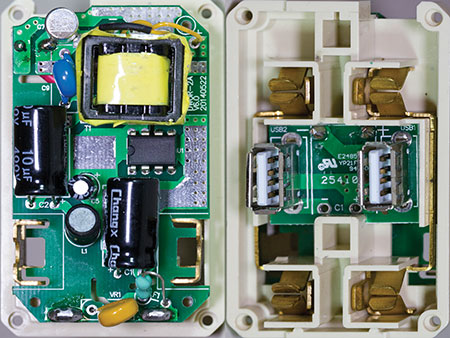
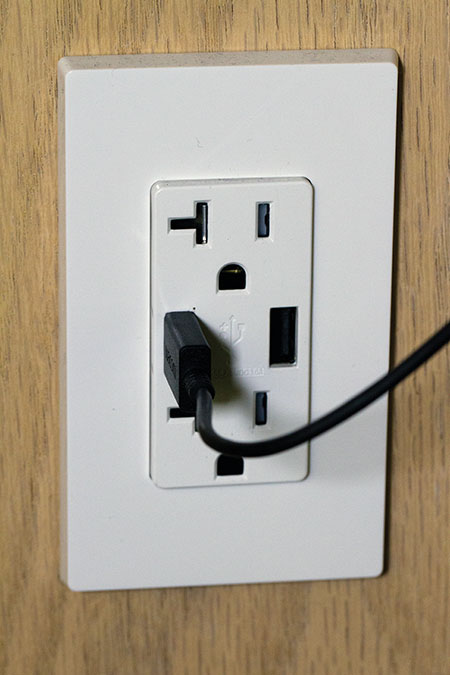
Do these charging receptacles save us any energy? I have not seen any facts that support this. Anytime we change from one voltage to another we have a loss of power. This is easily verified by feeling any charging device that is plugged in; the heat you feel is a loss of power. There are some basic items that are generally found in each unit: a transforming method to lower the voltage, a rectifier to convert ac to dc, some form of resistance and capacitance to get it down to a regulated voltage. With modern electronics, we can accomplish this in quite a small package. However, the general principles are not too different from the voltage converters we used to build in electric shop decades ago to power our 9-volt transistor radios.
Finally, how sophisticated are these charging receptacles? Some are simply a power conversion device that will charge any device (some faster than others). At least one manufacturer has taken their units one step further by utilizing what they call a smart chip that allows the charging circuit to do a handshake and recognize the connected device in order to optimize charging power for the most efficient charge.
These units allow us to charge devices without having to remember where we left the plug-in charging block, but you still have to locate the USB cable for your device. At our house, we bought several USB cords and keep them at each charging location for convenience. One of the biggest advertised advantages is that these devices will eliminate the clutter of chargers and cables for charging your devices, but I’ll let you be the judge of that.














Find Us on Socials